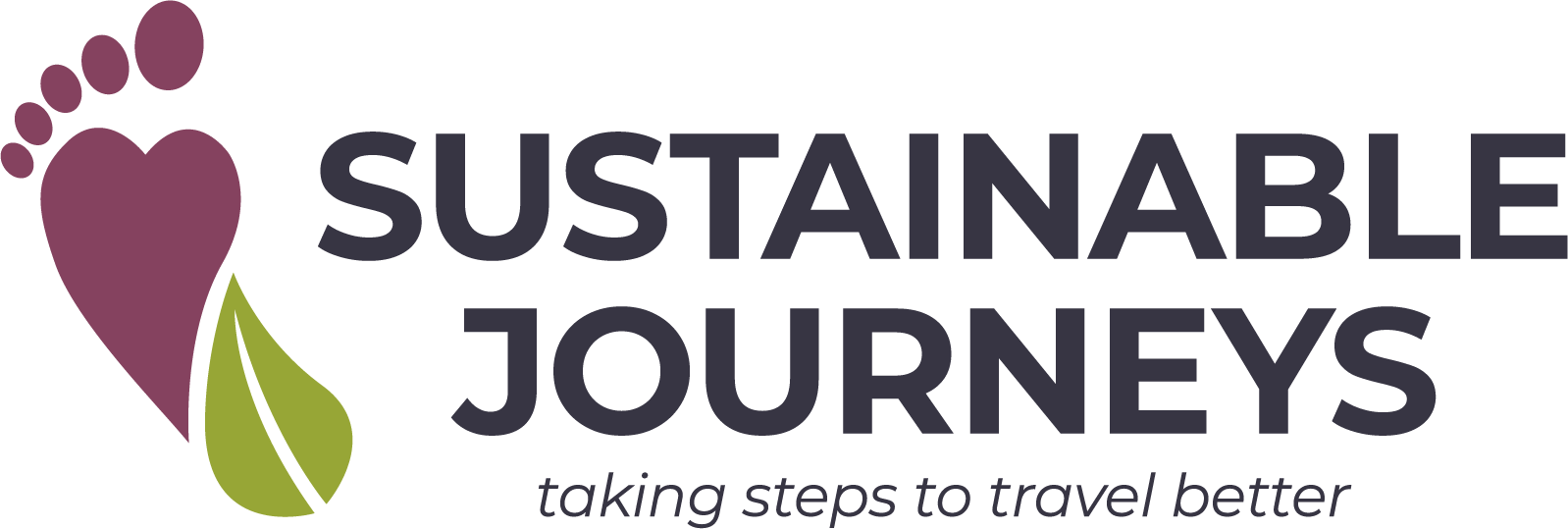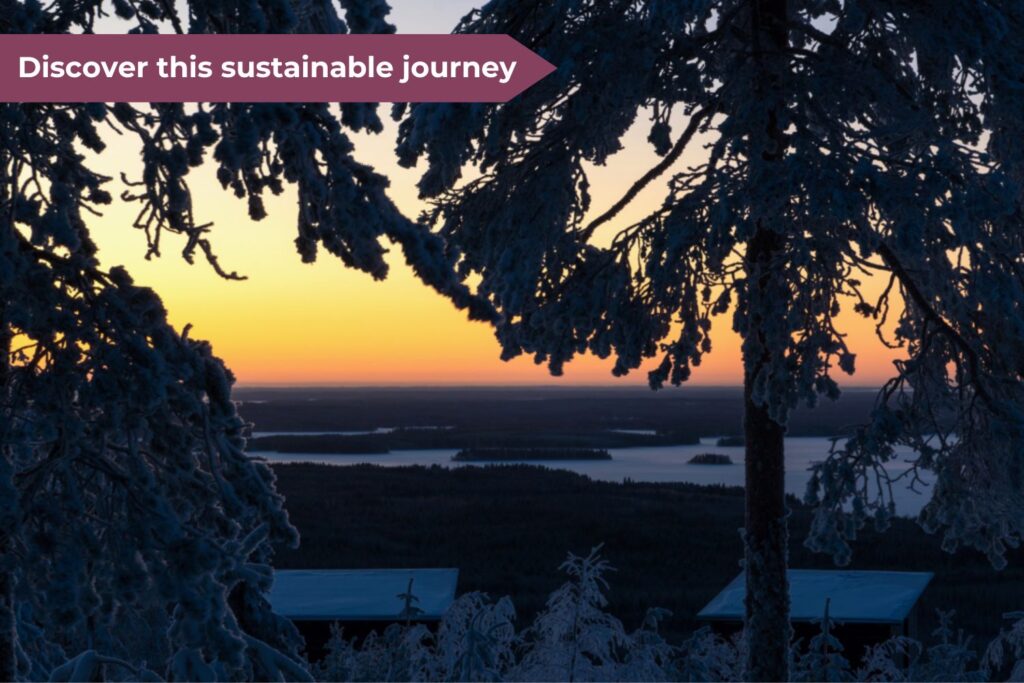Helsinki, the picturesque capital city of Finland, is known for its rugged and extensive coastal stretches along the Baltic Sea – all within easy reach of urban spaces. These beaches and rocky promenades are particularly popular with walkers. One of the best paths starts in Helsinki’s Market Square and follows the coast to Lölyly, which is not only famous for its sauna but also for being the first FSC building in Finland (see the glossary). The route continues on and encircles the city’s oldest park, Kaivopuisto.
Recently, on a chilly and misty summer morning near the water, I quaffed Valamon Kerubi Marjakuohuviini local-style champagne on the rooftop of the stunning Allas Sea Pools complex (see more about that in the glossary). I moved on to the incredible Natura, in the bustling Punavuori district of Helsinki. This restaurant focuses on vegetables and sustainable seafood. Here you can find dishes with ingredients such as Zander which is caught by local fishermen in Pietarsaari. There is also rhubarb, hibiscus, peanuts, and blackcurrants from the restaurant’s own garden.

Foodies looking for sustainable options in Helsinki will want to try Grön which specialises in using seasonal, organic, and wild Nordic ingredients to create unforgettable culinary experiences. The restaurant’s dedication to sustainability has also been recognized with a Michelin green star. Just outside the city, and known for a strong focus on locality, VÅR builds each course with fresh, seasonal ingredients hand-picked by local producers and it also holds a Michelin Green Star.
The capital city is equally famous for the attractive archipelago of islands (about 300 in total and covering 130 km) that lie on its doorstep. During Scandinavia’s long summer days, the islands are a destination that nature lovers flock to. And several of the islands are also fascinating for historic landmarks including Suomenlinna with its maritime buildings and ancient fortress.
Excited to experience Finland’s unique culture and scenery for yourself? On this 11-day trip, you’ll explore Finnish Lapland, Kemi, and the Finnish Lake District. You’ll stay in responsible accommodation and spend time with the Sámi indigenous community, visit the Snow Castle of Kemi, and enjoy fantastic excursions.

The public ferry services available to these islands are making enormous strides in sustainability. HSL for one, has a forward-looking strategy for 2025 that includes zero-emission public transport as well as record-making high-use. Call Boats have electric passenger vehicles and J-T Lines are using renewable biodiesel. FRS Finland has older vessels but new-ish engines in line with their sustainability strategy (2020).
One of the closest of the archipelago restaurants to the city is Saari. Literally just a stone’s throw from Helsinki. Located on Siraplesaari island and offers breathtaking views across the Gulf of Finland. Saari serves outstanding seasonal delicacies and follows the sustainable seafood guide. Some examples might be Pine tar salmon accompanied by smoked mayonnaise, avocado and seaweed plus vegetarian delights: grilled asparagus and pumpkin pasta. The restaurant is only open from May to September and the menu changes every year depending on availability. Saari has banned single-use plastic, only uses tap water and is strict about recycling.
Dining on the restaurant’s sunny terrace or nautical dining hall is an escape in and of itself.

Suomenlinna island is a maritime historical gem and also a UNESCO World Heritage site because of its sea fortress. The fortress was used by Sweden first, then Russia and, ultimately, Finland and has six kilometres of walls, 100 canons, and a multitude of tunnels. There are also museums, with guided tours available including private tours in selected languages. But there is also a diversity of flora and fauna here with many migratory birds, such as white-fronted geese and swans, stopping to graze or nest. It is known for long sandy beaches and rich fishing grounds which makes it a draw for campers looking for an indulgent nature break. And it is an easy journey – simply purchase a public transport ticket and board the municipal ferry from Market Square.
Lonna Island is ideal for those looking to enjoy the calm retreat of a sauna. Its two loft saunas are made of completely natural materials and heated by a wood stove. Tanja, the general manager says, “Some might think using wood is not the best and the most sustainable way to heat a sauna. But, as of [a] few years back, Finnish sauna culture was added to UNESCO’s Representative List of the Intangible Cultural Heritage of Humanity. Therefore, we believe wood-heated saunas are the best. Our wood comes from certified forests, and we always know the origin.” The two saunas accommodate 24 and there is always room for a minimum of 12 persons each hour.
Editors note: see the article about Finnish Sauna Culture.

Another fascinating island paradise is Kaunissaari Island. Farthest from the city – a 40-minute ferry trip – it provides spectacular views out over islands and water. The Kalastajakylä historic fishing village is considered a location of national importance and is therefore protected by law. The island is known for its impressive diversity of flora, and many visit to enjoy nature at its best. Kaunissaari in spring is an avian enthusiasts’ mecca particularly when the migration of Arctic birds is in full swing. Midsummer is celebrated with dancing, drinking, and eating and is when boaters, cottagers and visitors alike come out to play. The ancient fire takes place at dusk on the last Saturday in August. The bonfire lit on the beach is in memory of bonfires burned in olden times and events that have started during the day, culminate in an evening party. The Kaunissaari Maja Restaurant is certainly worth a visit, with many indulging in their famous salmon soup accompanied by rye bread fried in butter. Culinary offerings are provided by mainland operators certified in responsibility and all packaging is returned to the mainland for recycling. Special attention has been paid to electricity and water with all unnecessary consumption consciously avoided.
Finland is well known for its eco-cred and is committed to keeping tourism in line with the UN Sustainable Development Goals which cover ecological, socio-cultural, and financial issues. To do this, the government asks tourists to be mindful when visiting their country ensuring they leave as little impact on the environment as possible.
I will certainly be returning soon to enjoy a low-carbon natural experience amongst the archipelago islands.

Glossary
FSC – The Strongest in Finland certificate enables the company to stand out from its competitors, attract positive attention and strengthen its brand image. The strongest in Finland is a certificate of good governance. Sustainability (ESG) and reporting on sustainability, and has become a permanent part of companies’ obligations and practices.
Allas Sea Pools- Allas Sea Pools endeavours to use local food produce where possible, particularly when it comes to poultry, meat and fish. They are continuously working to minimise food waste, for example by adjusting the amount of pre-made food and focusing on made-to-order food to match the actual demand. The sizes of menu items and buffet foods have also been calculated to represent the optimal amount per person.
Find out more here.
Feeling inspired? Experience the magic for yourself by booking one of our Sustainable Journeys.
Editorial submission – 07th March 2024









